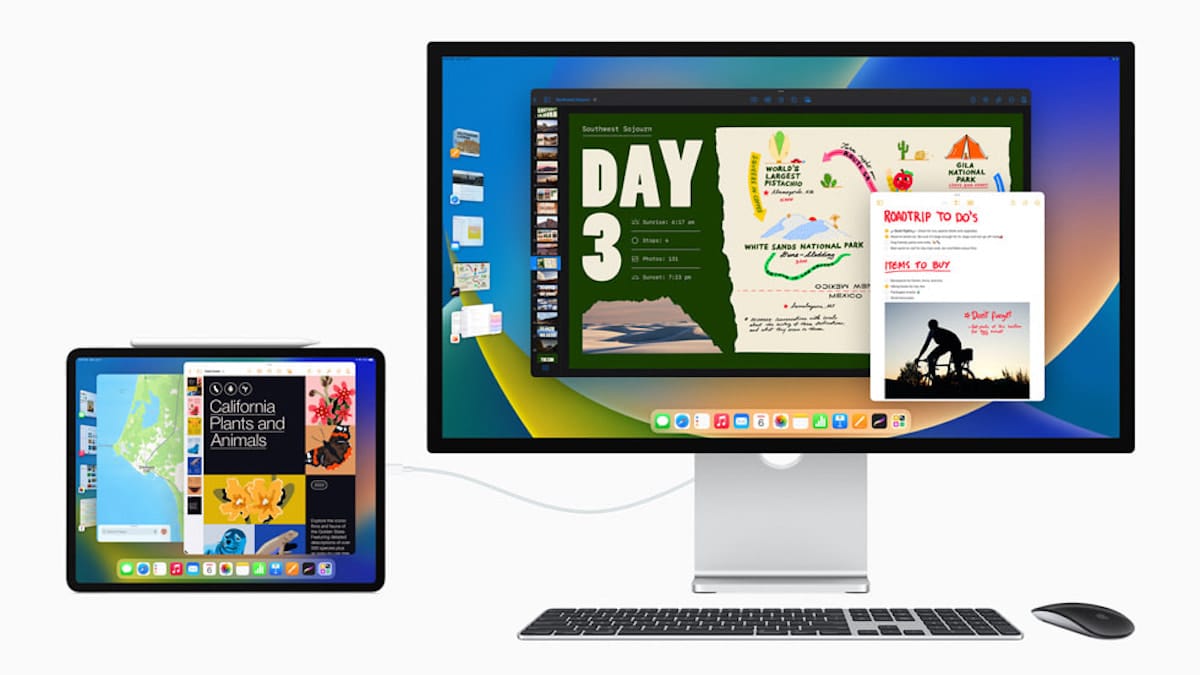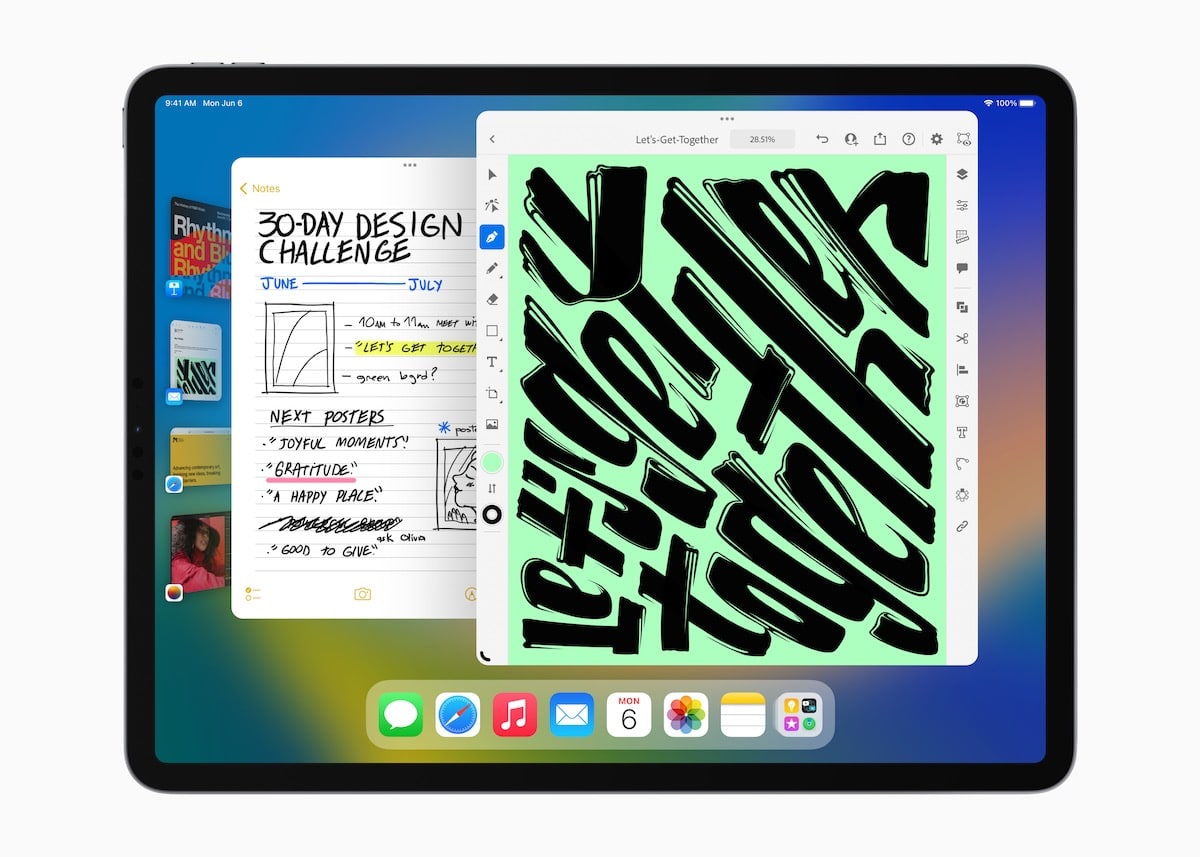Apple’s Stage Manager is an exclusive new iPadOS 16 multitasking feature for iPad models with M1 chips. It allows users to open up to 4 apps at a time as windows, and multitask as they would on a Windows PC or Mac. However, older iPad models are apparently not fast enough to support this feature, as per Apple’s recent public comments with various publishers.
M1 iPad models feature up to 16GB RAM, which provides them sufficient headroom for multiple apps to be used in windowing mode, however, it has left users disappointed who were led by Apple to believe that their older iPads were sufficiently powerful devices.

Why does Stage Manager only work with M1 iPad models?
The official explanation from Apple says that delivering a feature like Stage Manager which supports up to 8 apps simultaneously across iPad and an external display with up to 6K resolution requires large internal memory, incredibly fast storage, and flexible external display I/O. These are all features that the company claims that M1 chip can handle flawlessly.
Apple has been on the defensive, with Craig Federighi defending Apple’s decision again, and saying that the user experience at a super-high frame rate is one of the key parts of the feature:
“We really designed Stage Manager to take full advantage [of the M1 chip],” said Federighi. “If you look at the way the apps tilt and shadow and how they animate in and out. To do that at super-high frame rates, across very large displays and multiple displays, requires the peak of graphics performance that no one else can deliver.”
He also went on to praise that M1 iPads have higher RAM capacity and storage that allows Stage Manager to be possible.
“It’s only the M1 iPads that combined the high DRAM capacity with very high capacity, high-performance NAND that allows our virtual memory swap to be super fast. Now that we’re letting you have up to four apps on a panel plus another four – up to eight apps to be instantaneously responsive and have plenty of memory, we just don’t have that ability on the other systems (*like previous iPad Pro and iPad Air models).
The odd thing here is that virtual memory swap is only supported on 256GB M1 iPad models, which means that the 64GB M1 iPad Air does not support it, yet it still supports Stage Manager. Surprise!
Strangely, when Apple launched the iPad Pro in 2018, it said that it is faster than 92% of all portable PCs sold in the past 12 months, including Core i7 models sold by mainstream laptop manufacturers. The iPad Pro posted benchmark numbers to back up the claims, while also powering a 120Hz Retina Display. However, the company never made it clear that something that those 92% portable PCs could handle without any issues, multitasking with multiple app windows, is something that the iPad would have trouble with.

Was iPad really powerful before M1?
This really makes one question Apple’s claims as to whether all the iPad Pro models sold before the introduction of the M1 chip were really even that powerful. Does the company not believe that its older iPad models were powerful enough devices or does it not want to spend sufficient resources to make Stage Manager work.
Artificially locking a feature to the latest devices is something that has happened before – Apple has done this with photographic styles on iPhone 13, as well as recently announced iOS 16 feature that lets users blur objects in the foreground for improved depth of field effect. Neither of these are features that cannot be handled by previous iPhone models, which have powerful silicon made by Apple.
2018 iPad Pro was released a little under 4 years ago. It featured an A12x Bionic chip, while its successor, the 2020 iPad Pro model, featured a similar chip called A12z, which only featured an additional GPU core. Another important difference was that the 2020 iPad Pro model featured 6GB RAM, compared to 4GB RAM in the 2018 models.
The A12z Bionic chip was also used in Mac mini machines given to developers, to migrate their apps to Apple Silicon, and was able to run macOS just fine, with the limitless multitasking that desktop users have been using for decades. Apple could have very well designed Stage Manager in a way that it would work on all iPad Pro models with A12x Bionic chip and onwards, but it never seemed to have considered it.
Evolution of iPad
While one could argue that it is tough to support older devices for many years with new software features and that M1 exclusive features were just around the corner, it leaves a bad taste for consumers. Apple sings praises for its chip performance and compares it to the majority of portable computers available, but when it came to Stage Manager, cracks began to show in its claims.
This is not to say that Stage Manager is a must-have feature for all iPad users either. The feature is severely limited, not just by the number of simultaneous apps that users can open at a time, but also by the small screen real estate that iPad models offer, including the 12.9-inch iPad Pro. The usability of the feature has a major question mark, and it is unclear whether future iPadOS 16 beta updates will resolve it. The best use case seems to be for external display usage, but it is hard to imagine that it is a use case for a majority of users.
It may be possible that Stage Manager might be available on all iPad models someday, but given how slowly Apple increases the RAM on iPhones and iPads, we would not be holding our breath.
For now, when Apple says that iPads are faster than most laptops out there, remember that there is more to devices than benchmark performance.